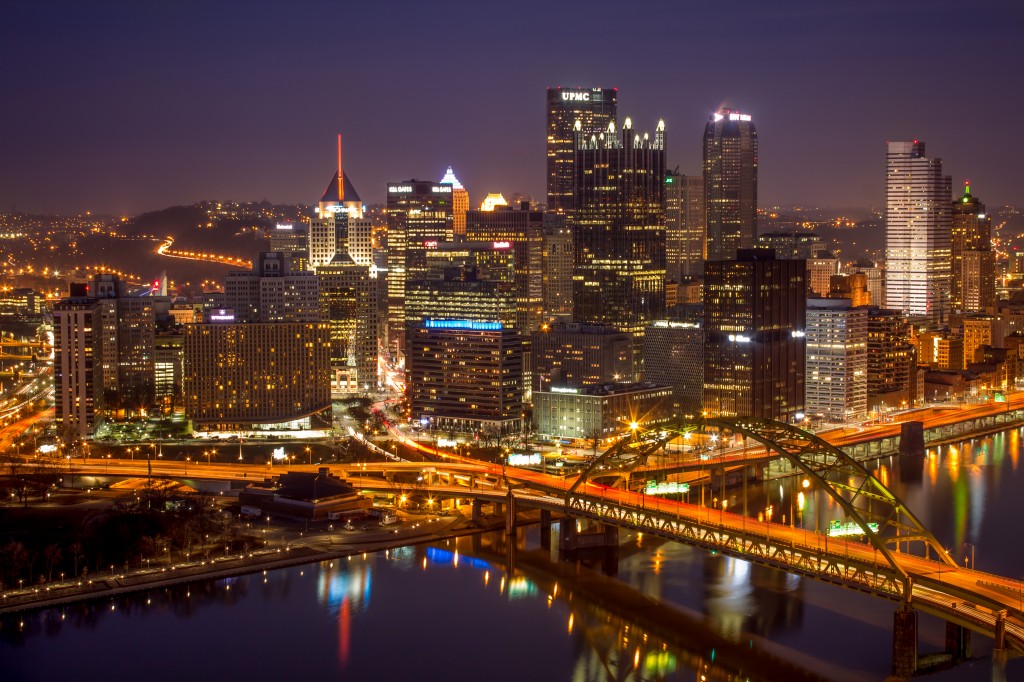
I was in Western Pa last week/weekend and durring the trip we did two days in Pittsburgh. The pic above was taken on our first night there!
My journey to get the above photo was not an easy one and oddly enough the lessons I learned from watching “The Grid” really helped me along the way.
For those of you who don’t know, “The Grid” is a podcast/webshow often hosted by Scott Kelby and Matt Kloskowski, but they regularly have pro guest hosts. On the show they talk about all things related to photography from business, to gear, to tips and tricks. It’s a great shows and not only is it normally educational, but it’s often fun to watch.
Lesson 1: Don’t Take Pictures of Your Backyard!
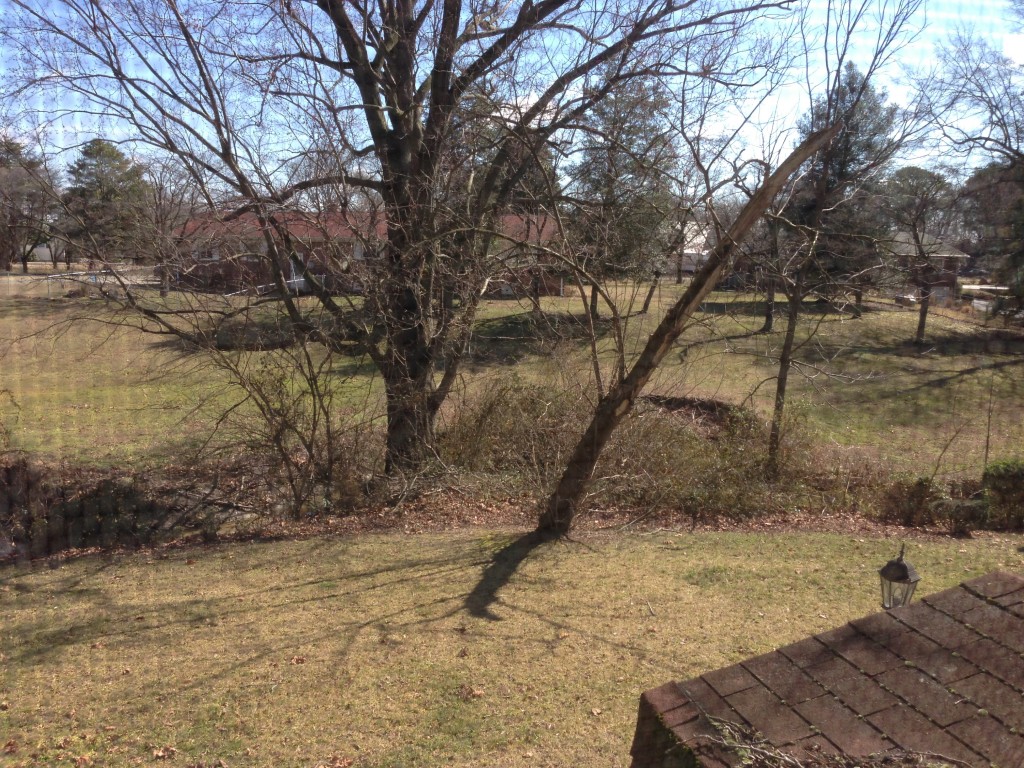
Ok ok ok ok… I’ve never actually taken a picture of my backyard in an ill-attempt to do a nice landscape shot. However, I live on the Eastern Shore of Maryland, which is a flat swampy place. Unless it’s summer or fall there really isn’t anything here worthy of being in a landscape shot. It’s a point that they’ve really been hammering in on in the past few months of “The Grid” and it makes sense. If you want to take great landscape shots you need to go to where those landscapes are.
Lucky/Unlucky for me, my girlfriend has been training out of state for the past month and we planned that on her second to last weekend I would meet up with her. The goal was to obviously see her, but a secondary goal was that I would be able to get up early in the mornings and photograph some nice mountain landscapes.
Lesson 2: Dead Trees Are Ugly!
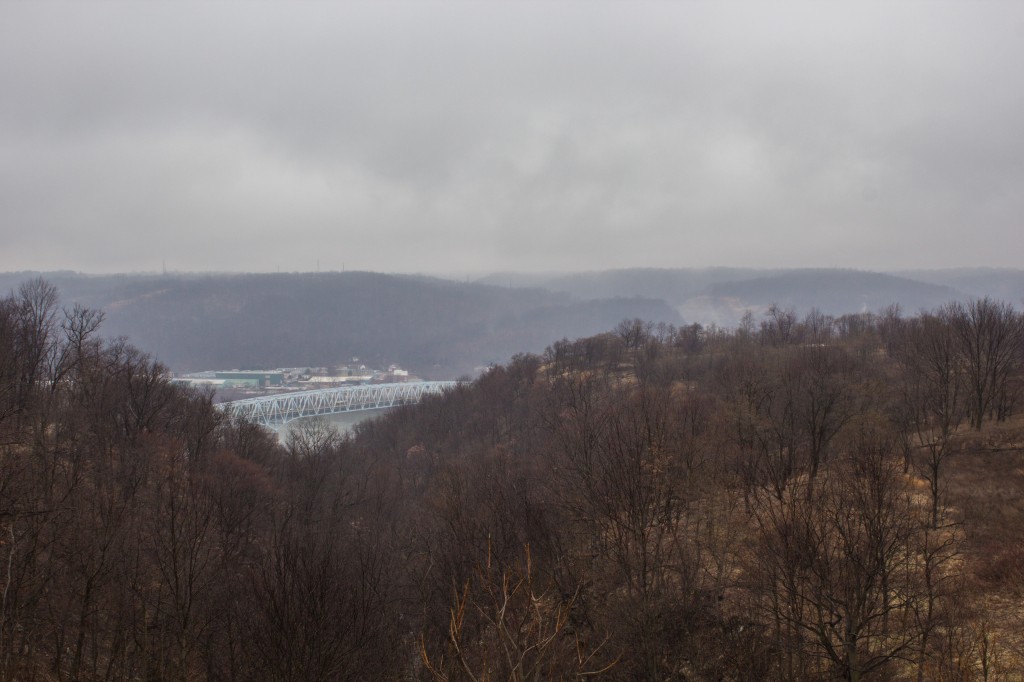
I was completely blindsided when I got to Western Pennsylvania. I expected evergreens and snow. I got neither! There might have been a time where I still would’ve tried to take a nice photo of dead trees but Scott Kelby really hates dead trees and mentions it in nearly every critique episode of “The Grid” so I didn’t.
I also thought about shooting some covered bridges or things like that, but Lisa said that in the three weeks she had been there that she hadn’t seen a single sunrise or sunset because the fog from power plants in Ohio completely blocked out the early/evening sun. That meant everything was a poopy brown and that the lighting was never going to be good.
Lesson 3: Use A Tripod!
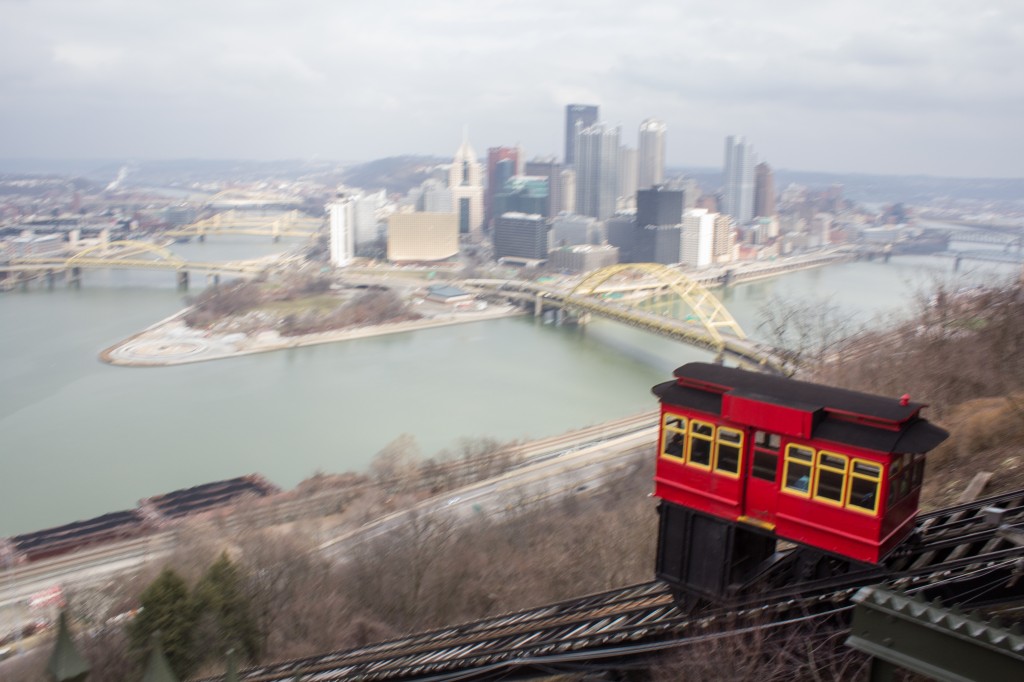
Since landscapes were a bust, I decided that my only hope of getting a nice photo was to do a skyline shot of Pittsburgh. We did some research and discovered that Mount Washington, a 1,200 foot incline across the river from Pittsburgh offered an amazing view of the city.
We hit up Mount Washington and it was spectacular. On the downside, the weather and smog were so bad that it was impossible for me to take a hand held photo. That meant if I wanted my pictures to be tack sharp or if I wanted to do a long exposure I would have to use a tripod.
Lesson 4: Find Your Composition!
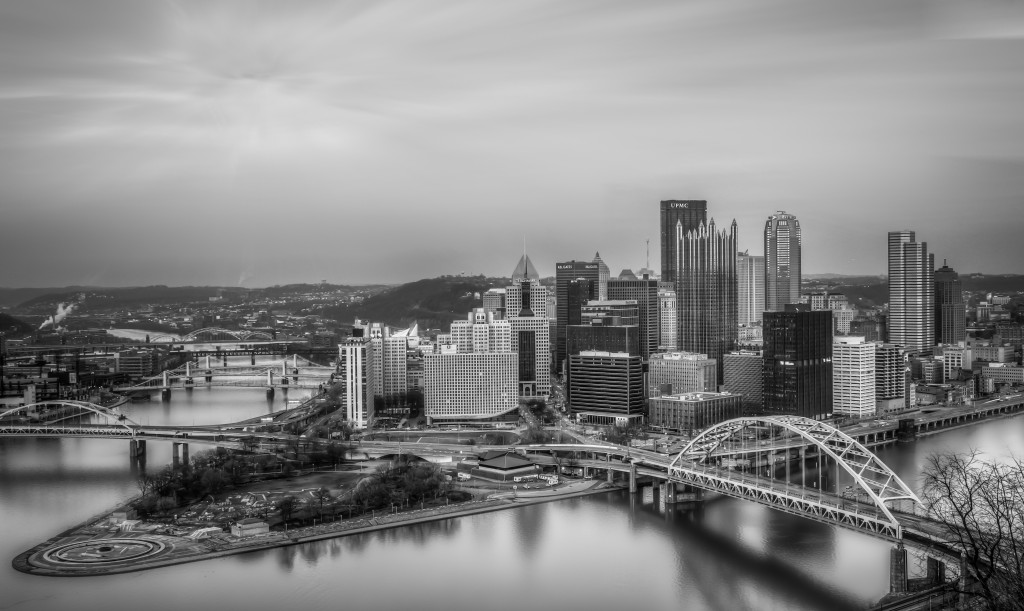
The view from Mount Washington was really neat to experience, but because it was February it wasn’t very picturesque.
After a few quick snapshots I picked out two major composition problems. Although the cable car looked really cool and including a foreground is nice for establishing distances it just didn’t work here because of the brown hills and dirty barges.
I also really liked the intersection of the three rivers at the tip of the city, but the fountain there had been drained and turned off for winter, leaving it looking dead and boring.
Lesson 5: Watch For Distractions!
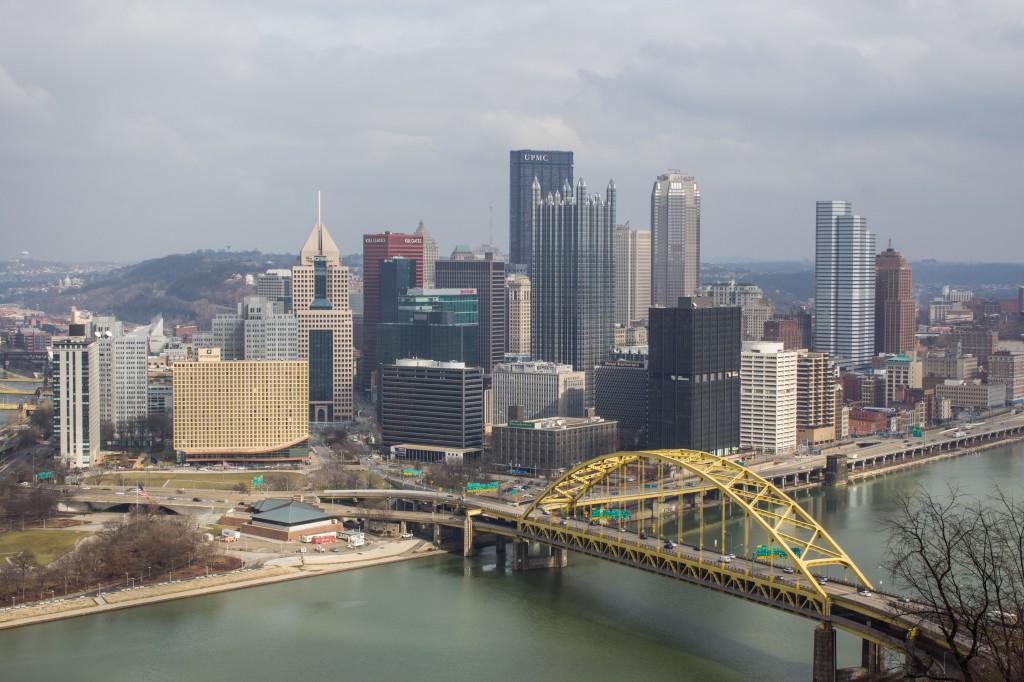
Since doing a wideshot or panorama was out of the question, I decided to focus on the downtown area of Pittsburgh. I was pretty happy with my initial shots but quickly discovered that I had dead trees creeping into frame.
Frame creepers are so obvious when you get home and are looking at photos on your computer. Yet when in the field it’s not something I used to look for. It wasn’t until “The Grid” critique episodes that I started actively checking for them in my own work.
Lesson 6: Pick the Best Light!
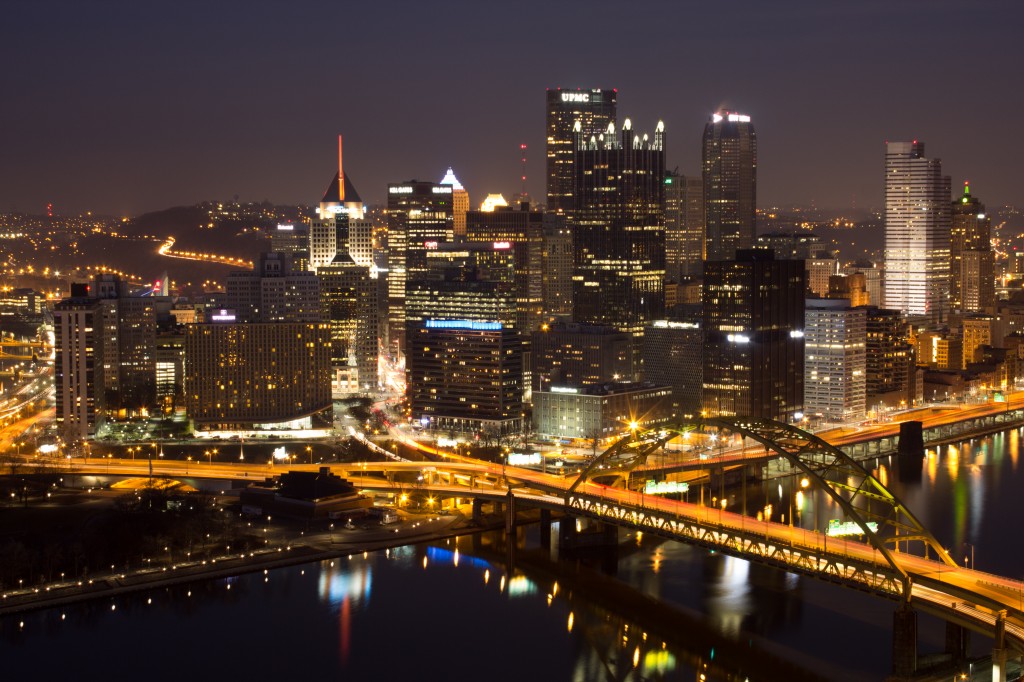
Since sunrises & sunsets seem to be so rare in the region I decided it was best to scout ahead of time, encase we got lucky.
We visited Mount Washington at noon and then returned thirty minutes before sunset. Scouting was important because when we went back in the dwindling light I already knew the shot I wanted to get. I just had to set-up and wait for the best lighting.
The only other trick I pulled was that I used an ND filter. I’ve only played around with an ND filter a few times but Matt Kloskowski swears by them so I wanted to make a serious attempt at using one. In this instance my goal was to do a longer exposer so that the water didn’t look choppy and so that there there was some movement in the traffic lights. I thought the two together would help the city look less static and more alive.
Lesson 7: You Have To Use Lightroom/Photoshop!

I honestly thought that the pro photographers could work magic and that their pictures automatically looked spectacular out of camera. Luckily “The Grid” quickly taught me how photography really works. There’s no shame in digitally processing your images!
For example in the final photo I didn’t do any crazy photoshopping but the minor tweaks make a huge improvement Look at the raw photo from Lesson 6. Notice those annoying red towers along the mountain ridges? Yeah they were distracting. Then look at the light in the bottom right corner. It also had to go! Those little things quickly add up and result in a much better looking photo.
Wrap Up!
Do I think my twilight shot of Pittsburgh will win awards? No, but it’s a nice photo and it’s a photo I couldn’t have taken six months ago.
All the lessons I mentioned above are ones I’ve heard repeated over and over again on “The Grid.” Some I’ve also heard other photographers mention in posts on Google+. So I think the important thing to note here is that if you are trying to improve and grow your skills as a photographer there are resources out there to help you. A lot of which are free so make sure you make use of them.